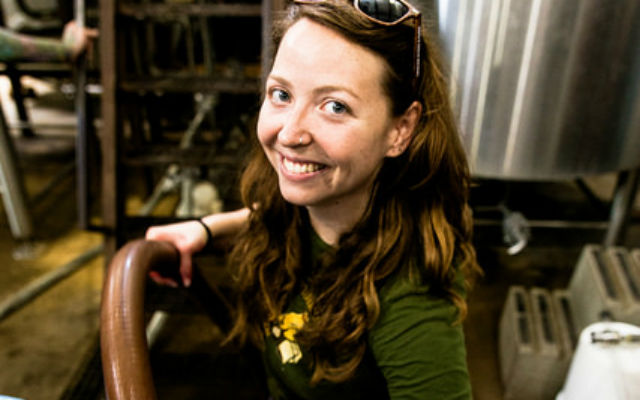
The ability to boost both on-premise and off-premise sales can benefit from a dual-focused strategy rooted in authenticity, data, and strong retail relationships. Many cidery leaders shared with Brewer Mag & Cider Business that achieving success in both channels comes from tailoring your approach to the unique demands of each, while staying rooted in the identity of your brand.
On-premise environments offer a powerful space for brand storytelling and consumer education. Amanda Oborne, CEO of Finnriver, said their team emphasizes connection through narrative.
“Our on-premise strategy focuses on authentic storytelling and connection — we train our team to speak to our mission and share the story of each cider, right down to ingredient sourcing,” she said.
Oborne adds that guided tasting tours and visits to the cidery’s property for retail accounts help reinforce that story:
“We’ve welcomed accounts to the farm as well, so they can take the tour and deepen their understanding of our story and sourcing,” she said.
In the tasting room, storytelling is key, said Tristan Wright, founder and president of Lost Boy Cider.
“We bring guests into our world, often converting first-time cider drinkers into fans,” he said.
By shaping a compelling in-person experience, cidermakers can turn curiosity into brand loyalty.
Patrick Kwiatkowski, co-founder of Houston’s City Orchard, takes a strategic view of on-premise that ties directly to long-term retail goals.
“We are very focused on on-premise sales,” he said. “We feel that this better builds the brand and will eventually help us to land mandates in important grocery chains like HEB in Texas. HEB is a great customer of ours, and their best advice to us was to get our ciders on tap next to their stores.
“It works!”
Off-premise strategies, meanwhile, require an entirely different toolkit.
“Generally speaking, the off-premise is much more data-driven,” explained Aaron Sarnoff-Wood, co-founder and VP of Sales at 2 Towns Ciderhouse. The Oregon cidery will pull in analytics from rates of sales and those of other brands and even adjacent categories.
“It’s all used to build a proposal that maximizes the retailer’s revenue potential given the available shelf space,” Sarnoff-Wood said.
Strong branding, eye-catching packaging, and retail support tools can also make a major difference.
“We invest heavily in this channel through strategic packaging, strong branding, and attention to shelf visibility,” said Charles Talbott of Talbott Cider. “We’ve also seen good results from eye-catching POS displays and signage, which help us stand out in competitive retail environments.”
Packaging adjustments often stem directly from conversations with retail and distribution partners. Oborne shared that Finnriver’s recent pivot to canned cider came in response to industry trends and feedback.
“This move was influenced by distributor and retailer input, broader industry momentum, and practical concerns — especially the fragile supply chain for glass recycling,” she said.
The result?
“We just launched our first two SKUs of canned ciders, and so far, they’ve been flying off the shelves,” she noted. (See a full interview about the switch to cans in a Cider Business/Brewer Mag Podcast.)
For 2 Towns, collaboration starts early.
READ MORE: Why Finnriver Broke Its Mold to Enter the Territory of Canned Products
“We regularly include both retailers and distributors in the development phase of our products,” Sarnoff-Wood said. That includes acting on specific requests, such as packaging tweaks. “If a retailer lets us know that the cardboard wrap on our 6-pack should have an image of the can on all faces of the package, we take that feedback very seriously.”
City Orchard’s Kwiatkowski also emphasizes boots-on-the-ground intelligence.
“We try to engage our distributor as a partner. This is always a work in process, and every team member must be engaged,” he said. “I get a lot of info from truck drivers and warehouse managers… they have the data in their gut.”
It’s not just about having great cider anymore. Success depends on aligning the product with the expectations of retailers, the preferences of consumers, and the reality of a crowded marketplace.
As Sarnoff-Wood puts it, “Tasting great isn’t enough if that product doesn’t address a need of our customer.”
Whether it’s training tasting room staff to tell a story or adapting packaging to stand out on shelves, modern cideries must flex between relationship-building and results-driven decision-making. The most successful brands don’t choose one channel over the other; instead, they learn to thrive in both.






2 Trackbacks / Pingbacks